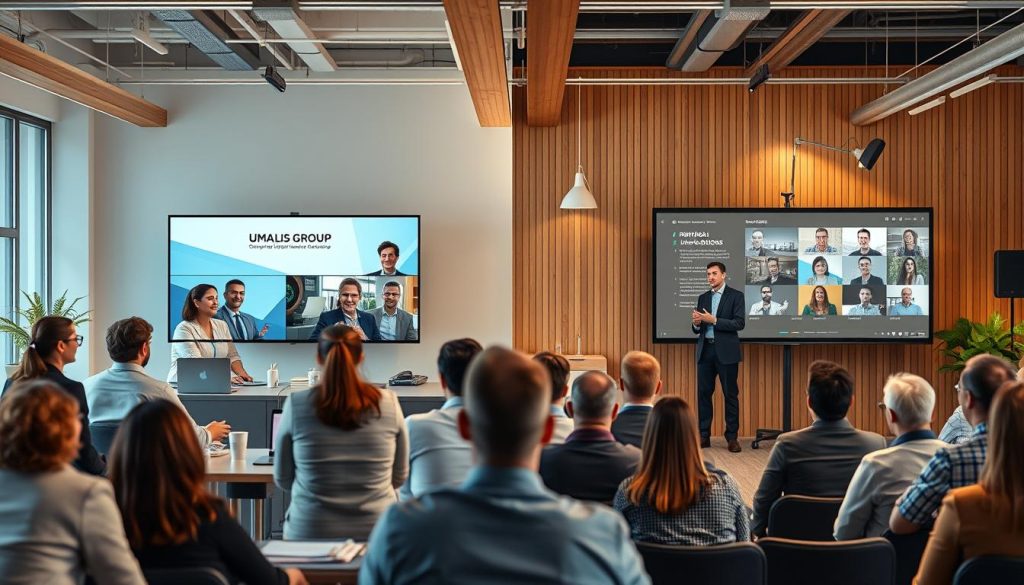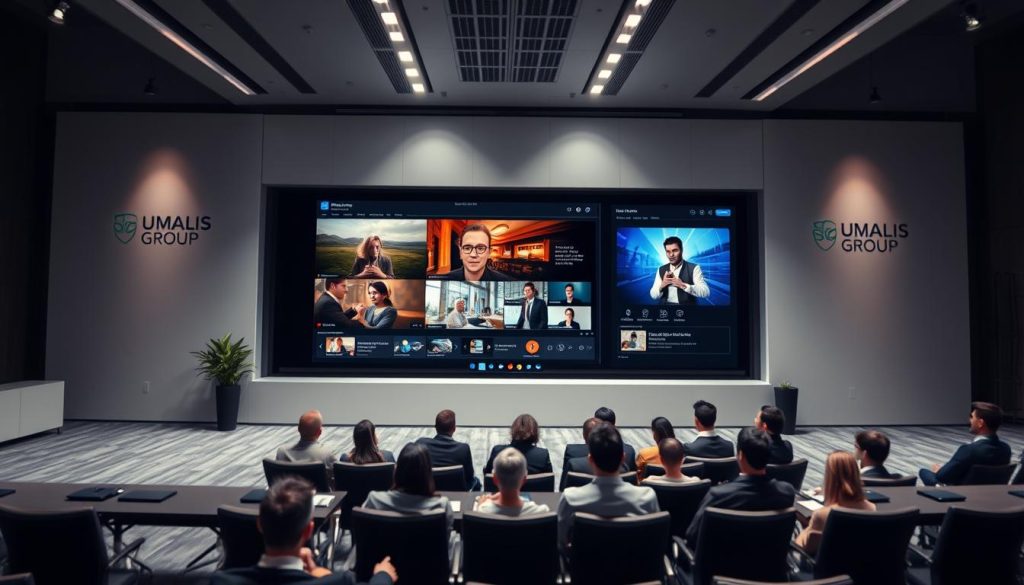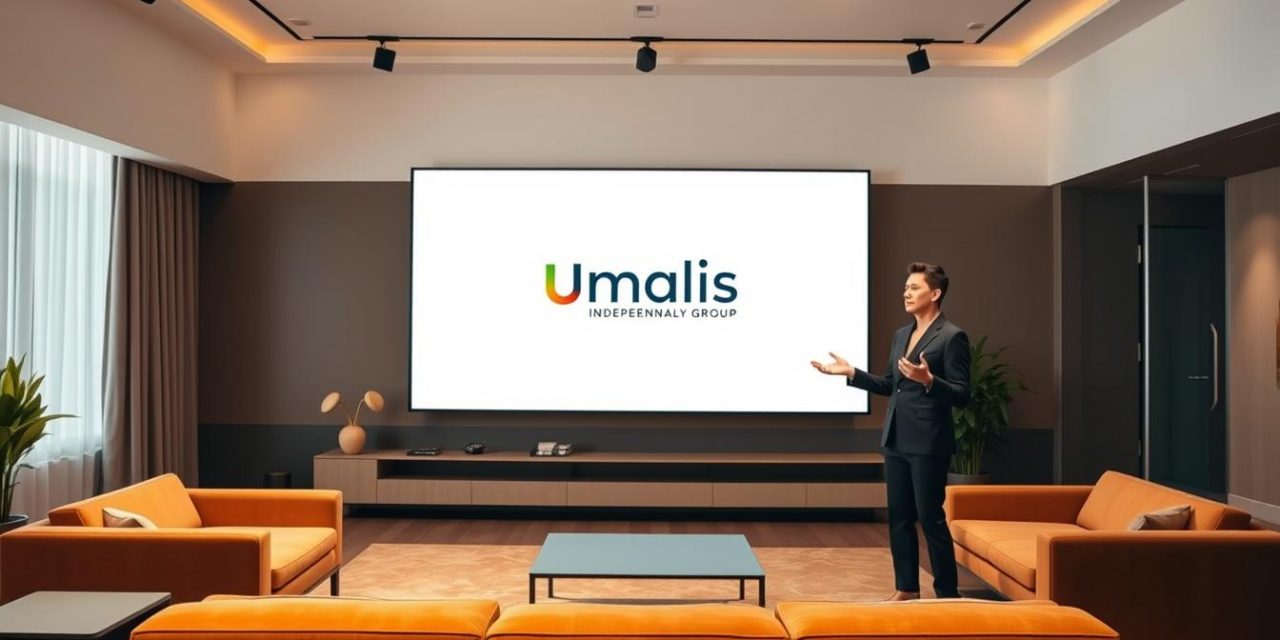Imagine waking up each morning, energized by the freedom of your independent career—yet quietly wondering how to sustain it. You’ve built expertise through years of hard work, but connecting authentically with clients while maintaining stability can feel like walking a tightrope. What if there was a proven way to share your knowledge, grow your influence, and create lasting professional security—all from your desk?
Online events have revolutionized how experts engage audiences. These interactive sessions let you teach, inspire, and build trust without travel costs or venue limits. For independent professionals, they’re more than a trend—they’re a strategic lifeline. You can showcase your skills in real-time, answer questions directly, and turn viewers into long-term collaborators.
This guide isn’t about quick fixes. It’s about creating meaningful relationships through structured learning. We’ll help you design sessions that reflect your unique experience while addressing your audience’s deepest needs. From crafting compelling topics to converting interest into steady income, you’ll gain tools to thrive in today’s digital-first world.
Table of Contents
Key Takeaways
- Online sessions let you share expertise while building authority in your field
- Real-time interaction fosters deeper client relationships across distances
- Low-cost format reduces financial risks compared to in-person events
- Recorded content can generate leads long after the live event ends
- Strategic planning turns temporary engagements into recurring opportunities
Understanding Webinars and Their Benefits
In today’s digital landscape, professionals need tools that blend expertise with genuine connection. Online seminars bridge this gap by combining structured learning with real-time dialogue—a formula that transforms how you engage your market.
What Is a Webinar?
A webinar (short for web-based seminar) lets you host live workshops or presentations through digital platforms. Unlike static videos, these sessions allow direct interaction with viewers through Q&A, polls, and screen sharing. This format turns passive viewers into active participants who see you as a problem-solver.
Key Benefits for Independent Professionals
For solo entrepreneurs and consultants, this approach delivers three strategic advantages:
- Authority Building: Demonstrate your knowledge through actionable insights, positioning yourself as a go-to expert
- Lead Generation: Every registration grows your contact list with warm prospects interested in your specialty
- Relationship Depth: Address specific challenges during live sessions, fostering trust that emails alone can’t achieve
The data speaks for itself—83% of marketers consider webinars essential for quality lead generation (Content Marketing Institute, 2023). By addressing your audience’s immediate needs while showcasing your expertise, you create lasting professional value that scales with your career.
Choosing the Right Webinar Platform
Your virtual stage matters as much as your expertise. The webinar platform you select becomes the foundation for client interactions, shaping how audiences perceive your professionalism. A robust system enhances engagement while protecting your brand’s reputation—choose wisely.
Essential Features to Look For
Prioritize crystal-clear video and audio capabilities. Grainy visuals or muffled sound undermine credibility instantly. Ensure compatibility with various devices—attendees might join from smartphones during commutes or desktops at home offices.
One-click recording transforms live sessions into evergreen assets. Repurpose content for email courses or social snippets. This feature also accommodates registrants in conflicting time zones, expanding your reach without extra effort.
Seamless CRM integration saves hours manually transferring attendee data. Automated follow-ups nurture leads while you focus on delivery. Platforms with built-in analytics help refine future presentations based on engagement patterns.
Security isn’t optional. Encrypted connections and password protection safeguard sensitive discussions—especially critical when consulting corporate clients. Verify uptime guarantees and 24/7 support; technical failures during live events can erode trust rapidly.
Finally, confirm scalability. As your audience grows, your webinar software should handle increased traffic without performance drops. Pay-as-you-grow pricing models prevent overinvestment while maintaining professional-grade quality.
Webinars vs. Virtual Meetings

Understanding digital communication formats ensures you select the right tool for your goals. While both involve online interaction, their structures and outcomes differ significantly. Let’s clarify when to use each method to maximize your impact.
Differences in Purpose and Format
A webinar focuses on delivering specialized information to a broad audience. Think of it as a classroom where you teach actionable strategies. Participants register weeks before the event, expecting polished presentations with slides or live demonstrations.
Video conferencing, however, thrives on collaboration. These sessions resemble roundtable discussions where everyone contributes ideas. You might use this daily for client check-ins or team updates without extensive preparation.
Consider these distinctions:
- Webinars demand detailed agendas and promotional campaigns to attract registrants
- Virtual meetings prioritize flexibility, allowing spontaneous adjustments to topics
- Attendees join webinars to learn, while conference participants aim to problem-solve
Choose webinars when establishing authority or generating leads. Opt for video calls when building partnerships or refining projects. Matching the format to your objectives creates clearer outcomes for you and your audience.
Planning and Promoting Your Webinar
Successful audience engagement starts long before your live session begins. A strategic promotion plan ensures your expertise reaches professionals who need it most. Let’s explore how to craft irresistible invitations and convert interest into registrations.
Crafting an Engaging Invitation
Your invitation must answer one question immediately: “Why should I attend?” Focus on specific outcomes like “Learn three tax strategies to save 20% as a freelancer” instead of vague promises. Busy professionals prioritize solutions over general topics.
Use bullet points to highlight tangible takeaways. Include credentials that establish credibility without sounding boastful. For example: “Hosted by CPA Jane Doe, who helped 300+ consultants optimize deductions.”
Optimizing Your Landing Page and Email Campaigns
Your landing page is where curiosity turns into commitment. Place the registration form above the fold with a clear call-to-action. Include:
- A 30-second explainer video summarizing key benefits
- Testimonials from past attendees
- Mobile-friendly design for on-the-go signups
Email campaigns thrive on consistency. Send three messages:
| Timing | Purpose | Open Rate Boosters |
|---|---|---|
| 3 weeks before | Generate excitement | “Reserve your spot” countdown |
| 1 week before | Reinforce value | Exclusive preview slide |
| Day before | Prevent no-shows | Personalized calendar link |
Social media extends your reach through shareable graphics and polls. Pair posts with your content creation guide to position your webinar as part of a larger educational strategy. Track metrics like click-through rates to refine future campaigns.
Creating Interactive and Engaging Webinar Content

True engagement in virtual sessions demands more than polished slides. Your audience craves participation that mirrors face-to-face collaboration. Let’s explore how to transform passive viewers into active contributors through smart design and real-time interaction.
Multimedia Tools That Captivate
Mix visual and auditory elements to maintain energy. Use screen sharing to demonstrate workflows or analyze case studies. For example, show how you troubleshoot client challenges using your preferred software. This approach makes abstract concepts tangible.
Alternate between slides, video clips, and live demonstrations every 5-7 minutes. Studies show varied formats improve engagement by 42% compared to static presentations. Embed short tutorials showing practical applications of your advice.
Spark Dialogue With Strategic Tools
Live polls and Q&A sessions turn monologues into conversations. Consider this comparison of engagement techniques:
| Tool | Purpose | Best Use |
|---|---|---|
| Polls | Gauge opinions | Start sessions to tailor content |
| Chat | Encourage networking | Between segments |
| Q&A | Address concerns | Final 15 minutes |
Position your Q&A session as a problem-solving clinic. Encourage specific questions like “What’s your method for X challenge?” This reveals pain points while showcasing expertise. Share key takeaways through social media strategies to extend your content’s reach.
Remember: interaction frequency impacts retention. Schedule activities every 10-12 minutes to sustain attention. Record sessions to repurpose highlights into email courses or blog supplements.
Webinars Best Practices for Independent Professionals

Structuring your online session effectively separates memorable learning experiences from forgettable presentations. A well-designed format keeps your audience engaged while reinforcing your expertise through clear, actionable content.
Designing an Effective Webinar Structure
Follow the 80-20 rule: spend 80% of time delivering value and 20% on strategic promotion. Start with a warm welcome question like « Share your location in the chat—let’s see where our community connects today! » This builds immediate rapport while confirming attendees belong in your target group.
Break your session into timed segments for maximum impact:
| Segment | Time | Purpose |
|---|---|---|
| Introduction | 5 min | Establish credibility & agenda |
| Core Content | 35 min | Deliver 3-4 key strategies |
| Interactive Q&A | 15 min | Address specific challenges |
| Closing | 5 min | Next steps & resource sharing |
Insert engagement triggers every 12 minutes—quick polls or case study discussions work well. As marketing strategist Lena Torres notes:
« Your audience remembers how you made them think, not just what you made them hear. »
Always end with clear action steps. Provide downloadable checklists or consultation links rather than generic sales pitches. This approach positions you as a solution-focused partner, not just another presenter.
Technical Setup and Troubleshooting for Live Sessions
Your expertise deserves a flawless stage—technical hiccups shouldn’t overshadow your hard-earned knowledge. A smooth internet connection and reliable tools let you focus on delivering value rather than fighting glitches. Let’s ensure your next webinar runs like clockwork.
Ensuring Reliable Equipment and Internet Connection
Test your camera and microphone 48 hours before your session. Adjust lighting to avoid shadows and position your camera at eye level. Use a wired connection instead of Wi-Fi whenever possible—it reduces latency by up to 40%.
Run speed tests using tools like Speedtest.net. Aim for at least 10 Mbps upload speed for HD video. Close background apps that drain bandwidth. Email clients and cloud backups often run silently—disable them temporarily.
Navigating Common Software Issues
Update your webinar software 72 hours in advance. New versions sometimes introduce unexpected bugs. Familiarize yourself with platform-specific shortcuts—knowing how to mute all participants quickly prevents echo during Q&A.
Prepare a backup link for attendees experiencing login issues. Share it in chat immediately if someone reports access problems. Keep a secondary device logged into the platform as a failsafe—you can switch instantly if your main system freezes.
Remember: technical confidence enhances your professional experience. A trial run with a colleague uncovers 90% of potential issues before your audience arrives. Your preparation today builds trust that lasts beyond this single webinar.
FAQ
What technical setup do I need to host a webinar?
Ensure a stable internet connection (wired preferred), a quality microphone, and a HD webcam. Test your webinar software beforehand and have backup equipment ready. Close unnecessary apps to optimize performance.
How long should a webinar be to keep viewers engaged?
Aim for 45–60 minutes, with 15–20 minutes reserved for live Q&A. Break content into 10-minute segments using polls or screen sharing to maintain attention. Shorter on-demand recordings (under 30 minutes) work better for replays.
What’s the best way to promote my webinar effectively?
Use targeted email campaigns with clear CTAs and a dedicated landing page. Leverage LinkedIn and industry forums for organic reach. Partner with niche influencers or clients for co-marketing opportunities.
Can I repurpose webinar content afterward?
Absolutely. Convert recordings into blog posts, social media clips, or email nurture sequences. Extract key insights for lead magnets or update existing training materials. Always obtain attendee consent before republishing.
How do I handle technical issues during a live session?
Assign a co-host to monitor chats and troubleshoot. Prepare a quick-reference guide for common platform glitches. If severe issues arise, pause briefly to address them transparently, then share the recording post-event as backup.
What makes a webinar landing page effective?
Focus on clear value propositions, bullet-point benefits, and a frictionless registration form. Include speaker credentials, agenda details, and trust elements like testimonials. Use urgency tactics like countdown timers for live events.
Should I charge for professional webinars?
For lead generation, keep them free. For advanced training or certification programs, use tiered pricing. Always offer a free replay option to capture late registrants and expand your reach.





